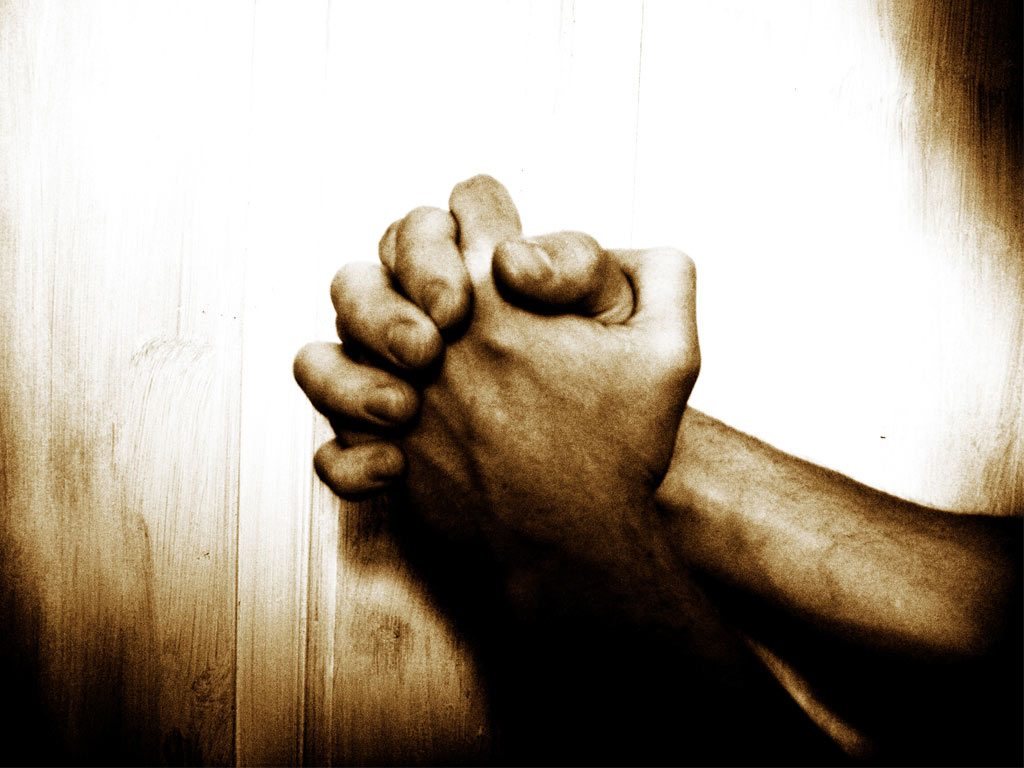Basilica of the Annunciation, Nazareth

The Basilica of the Annunciation in Nazareth is a modern Catholic church built over the remains of Byzantine and Crusader churches. It incorporates the cave in which the Virgin Mary received the news from Gabriel that she would give birth to Jesus. The site has been a pilgrimage destination since earliest times and remains an important stop for Holy Land pilgrims today.
History
Early sources on Nazareth’s history are scarce, but Eusebius says Nazareth was a small Jewish town in the Roman and Byzantine periods. Evidence of Jewish converts to Christianity in Nazareth is provided by the historian Africanus in the 3rd century and pilgrimage to Nazareth is first attested in the late 4th century.
The cave that is enshrined inside the basilica was identified no later than the 4th century as the place of the Annunciation. It is not known when the first church was built here, but one probably existed by the early 4th century. An altar is referred to in c.384 AD and a church is mentioned by c.570 AD.
Martha is a Big Girl and Can Take Care of Herself

This Sunday’s Gospel of the story of Martha and Mary (Lk 10:38-42) often results in people rallying to support poor Martha who is chided by Jesus for being anxious about many things. Too often, the figures of Martha and Mary are seen as representing the contemplative (Mary) and active (Martha) lives. Folks who are accustomed to handling details concerning hospitality rush to Martha’s aid saying that, if it were not for her and people like her, nothing would ever get done. I understand the sentiment behind that but the problem is, it misreads the Gospel story.
Jesus is not setting up a contrast between the contemplative and active lives. He does not chide Martha for paying attention to the details of hospitality but for “being anxious about many things” and he commends Mary for choosing “the one thing that is better.” Jesus wants us to direct our attention in this story to what Mary has chosen over Martha’s anxiety. In other words, in this story, Martha is simply in the wrong. Period.
Now if that bothers you, recall how many times Peter was simply in the wrong. Or for that matter, Thomas. Or James and John. Martha is in good company. She is a big girl and can take care of herself, thank you!
What seems to bother so many of us is that Martha’s “job” is a lot like the work that many of us find ourselves doing either at home, in ministry, or at work, so it seems as though Jesus’ criticism is hitting a little too close to home. Jesus, however, is criticizing Martha’s attitude. Jesus spoke in general terms about not being anxious in his conclusion to the Sermon on the Mount (Mt 6:25-34). We all love that “birds of the air” and “lilies of the field” stuff but we get a bit uncomfortable when we hear Jesus so pointedly direct the same wisdom at Martha, because we are so much like her. Perhaps we need to approach this story in another way.
The Committee Rattling in My Mind

This is a guest post by Beth Knobbe.
conference roomThere is a never-ending committee meeting that rattles in my mind. It sounds like this:
Don’t forget to pick up apples at the grocery store….I wonder what Sam thought about that conversation we had earlier today. I bet he thought I was too hard on him….How many apples do I have left in the refrigerator? Maybe I don’t need to stop at the store….Do I owe Sam an apology? Maybe I should call him. Never mind, that would be awkward….I’ll just wait and stop at the grocery store tomorrow.
From the mundane to the interpersonal, it is rarely quiet inside my head. There are many voices who sit at my proverbial conference room table-Jealousy, Anxiety, Gratitude, Hope, Forgiveness, Fear, Pride, Lust, Humor, Love. In the midst of all the chatter, one of the great gifts of Ignatian spirituality is the ability to discern the voice of God.
Silence
The voice of God speaks most clearly when I make room for silence. Like Elijah in the cave, I have learned to trust the still, small voice, which often takes the form of a quiet nudge or a fleeting moment of clarity. When I’m committed to spending time with God in silence, I’m better able to recognize and trust those flashes of insight (“Just pick up the phone and call Sam.”) in the midst of the chaos.
Consolation and Desolation
Thanks to the Ignatian exercises, I am more profoundly aware of the movements of consolation and desolation, even in my small daily decisions. Ignatius describes consolation as water falling on a sponge. When our hearts are aligned toward God, words of consolation gently fall onto our hearts and draw us deeper into the heart of Christ. Although stopping at the grocery store may seem insignificant, I feel better when I make healthy food choices, and I have more energy to do the work to which God has called me.
Desolation, on the other hand, draws our attention away from God and distracts us from doing God’s will. Ignatius says spiritual desolation sounds like water hitting rock. It is jarring, and it slowly erodes my sense of right judgment. Even when I take my conversation with Sam into prayer, I have the propensity to imagine the worst-case scenario! I get anxious about all the horrible things Sam might say, and I fear that I’ve been a bad friend. (That’s desolation!)
Examen
It is often at the end of the day, when I sit down with God and review my “meeting notes,” that clarity reigns. I first ask God, “Show me this day from your perspective.” Then without judgment, God and I walk back through the day. I hear God’s voice calling me to greater friendship, forgiveness, and good health. I also hear myself giving in to anxiety and fear. I am grateful for all of these insights and most grateful for God’s love despite my shortcomings.
And then, for one day at least, the committee is adjourned!
Wisdom Story 64

by Paul Brian Campbell,SJ
One day a monk left his ashram and went out to the main street of the city, jiggling a few copper coins in the palm of his hand. As the beggars thronged around him, he announced that he would only give the coins to the poorest man in the city. As the demanding hands pressed him from all sides, he kept saying, “No, it is not you-not you-not you,” and he continued walking.
Suddenly the fanfare of trumpets obscured the noise of the city. Guards hurried down the street to clear away the riff-raff, and proclaimed that the Maharaja was coming out of his palace on his royal elephant.
The people lined the street with eager anticipation to make their obeisance to their king, but the monk stepped in front of the elephant, and, addressing the king in a loud voice, said, “O Great Maharaj! I have something for you.” And he tossed the copper coins to the king. The king was astounded and demanded to know why the monk was being so impertinent.
“Your majesty, I made a vow that today I would give this copper coin to the poorest man in the city.”
“Me!?” screamed the king. “I own this city! I own this whole country! How can you say that I am the poorest man?”
“Because you have constant hunger for more possessions.”
Pope on the road: Vatican does detailed planning but expects surprises

Pope Francis declines a hat presented by a boy as he arrives for a general audience in St. Peter’s Square at the Vatican last month. At outdoor events the pope has been encouraging children and parents to wear hats and sunscreen. (CNS photo/Paul Haring)
By Cindy Wooden
Catholic News Service
VATICAN CITY (CNS) — While Pope Francis’ July 22-28 visit to Brazil has been planned almost down to the minute, the papal spokesman is certain it will be “a bit of an adventure.”
The main events of World Youth Day are the same as they have been for years, but Pope Francis “is full of surprises,” said Jesuit Father Federico Lombardi.
Briefing journalists July 17 about what to expect in Brazil, Father Lombardi had a thick red-bound tome of Mass texts and other prayers, the pope’s official schedule as released May 7 and a more detailed schedule complete with little icons of airplanes, cars, helicopters, popemobiles and a liturgically vested walking pope.
The icons provide a quick visual clue as to how the pope will move. For example, the little car illustrates his arrival July 25 at the Varginha sector of the Manguinhos complex of slums. He’ll begin in the neighborhood church (there’s an icon for that), then walk along the neighborhood streets. He is likely to encounter a family and visit their home. Then he will continue walking to the soccer field, where he will address the entire community.
Italian Novices Visit Fr. General
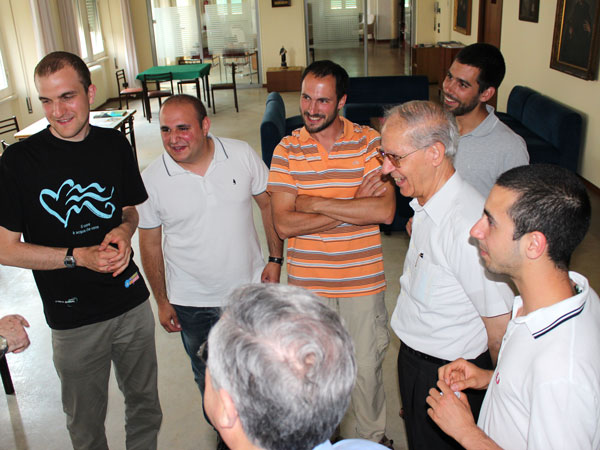
There was a cheerful applause for the nine novices and their novice master, Fr. Carlo Chiappini, from Genova, at lunch in the Curia on Sunday, 07 July 2013. The group included seven first-year novices and two second-year novices. They arrived at the Curia for a short visit and to greet Fr. General following their attendance of the Papal Audience of Seminarians and Novices held at the Vatican this past week. They shared their experiences of the Papal Audience with Fr. General and the community members during a short social hour after lunch.
Pope Francis: All life has inestimable value
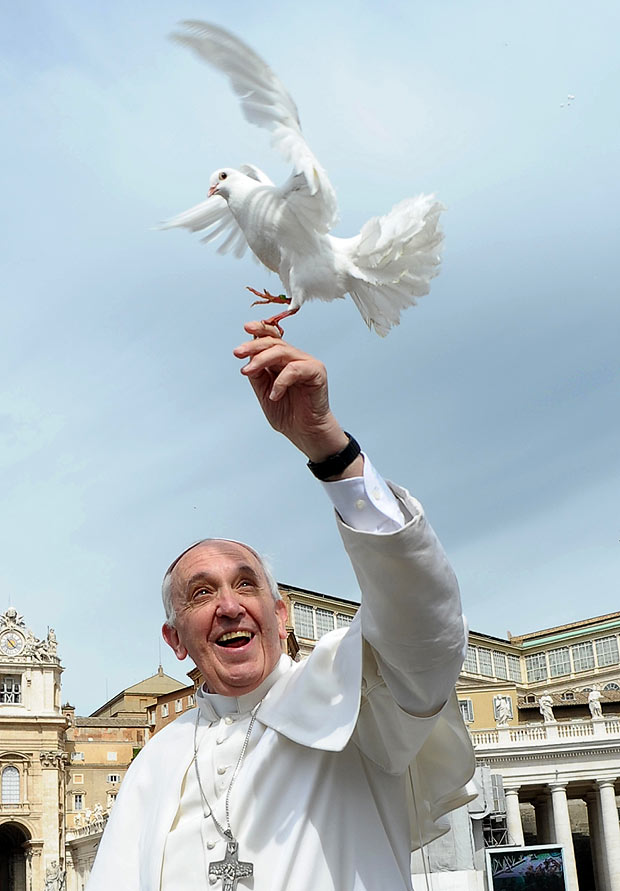
Pope Francis sends message of support for human life to Catholics in Ireland, Scotland and England and Wales. Below is a communique from the Bishops ‘Conference of England and Wales (CBCEW) attached with the Pope’s message signed by Vatican Secretary of State Cardinal Tarcisio Bertone.
In a special message to Catholics across Britain and Ireland, ahead of the annual Day for Life, Pope Francis has emphasised the need to care for life from conception to natural end.
In his message, he says that all life has inestimable value ‘even the weakest and most vulnerable, the sick, the old, the unborn and the poor, are masterpieces of God’s creation, made in his own image, destined to live for ever, and deserving of the utmost reverence and respect’.
He has promised his prayers that ‘Day for Life will help to ensure that human life always receives the protection that it is due.‘
Over half-a-million leaflets have been sent to parishes in England and Wales in readiness for Day for Life Sunday (28 July). The theme of the Day is ‘Care for Life – It’s Worth It’ taken from a homily preached by Cardinal Bergoglio in 2005 during a Mass in honour of the protector of Pregnant Women, Saint Raymond Nonnatus.
Within this homily, the now Pope Francis said: “All of us must care for life, cherish life, with tenderness, warmth…to give life is to open (our) heart, and to care for life is to (give oneself) in tenderness and warmth for others, to have concern in my heart for others.
Caring for life from the beginning to the end. What a simple thing, what a beautiful thing..So, go forth and don’t be discouraged. Care for life. It’s worth it.”
This year’s Day for Life focuses on care for unborn children and their mothers; care for people who are elderly and care for those who are suicidal and their families. One of its key aims is to build an environment of compassion and care that nurtures and sustains life, even in the most challenging of human events and personal circumstances.
Day for Life is celebrated annually by the Catholic Church in Ireland, Scotland and England and Wales. The proceeds of the Day for Life collection to be held in parishes in England and Wales assist the work of the Anscombe Bioethics Centre and other life related activities supported by the Church.
Text of the Message from Pope Francis to Catholics in Ireland, Scotland, England and Wales
“Calling to mind the teaching of Saint Irenaeus that the glory of God is seen in a living human being, the Holy Father encourages all of you to let the light of that glory shine so brightly that everyone may come to recognise the inestimable value of all human life. Even the weakest and most vulnerable, the sick, the old, the unborn and the poor, are masterpieces of God’s creation, made in his own image, destined to live for ever, and deserving of the utmost reverence and respect. His Holiness prays that the Day for Life will help to ensure that human life always receives the protection that is its due, so that “everything that breathes may praise the Lord” (Psalm 150:6).”
The day for life in Scotland England and Wales is marked on Sunday 28th July, while is Ireland it is celebrated on Sunday October 6th.
St. Joseph Old Cathedral
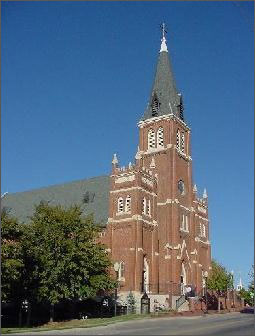
by Krystyna Skvorc, parish historian
In the late afternoon of April 22, 1889, a crowded train carrying hundreds of would-be homesteaders arrived from Purcell. As the frenzied hopeful late-comers jostled their way onto the makeshift platforms, there emerged one tall, solitary figure dressed in black from head to foot. The Rev. Nicolas F. Scallon, attired in the priestly traveling garb of the day, made his way along the dusty trampled paths toward the newly formed Oklahoma City.
Already tents and crude wooden lean-tos had been erected along what was soon called Main Street, Fr. Scallon set about locating each Catholic settler, as well as possible places in which to celebrate Mass. In fact, many of the first Masses were celebrated in a tent which housed McGinley’s General Store. On one occasion after a heavy rain had turned the red dirt of the unpaved streets into a soupy mix of mud and horse manure, Fr. Scallon excused the ladies from attending Mass. He kindly noted that the muck would certainly soil their skirts.
Less than two weeks after The Land Run, Fr. Scallon and his fledgling flock of 16 families began plans to build a church. For $225 they bought three lots on “Blue Hill.” so called because of the srnall blue wildflowers that blanketed that part of the prairie. Work on the 24-x-40-foot wooden structure began July 1, 1889. The cross was placed atop the spire July 31. The $101 bell was hung Aug. 2, 1889.
On Aug. 4, the 650-pound bell for the very first time rang out its joyful call to worship for all to hear. Across the recently settled prairie town, rich and poor, old and young. paused momentarily, and considered each his own journey with God. As the warm summer breeze filtered through the white wooden walls of Oklahoma City’s first Catholic church, the happy tones of the big bell faded.
At once, pioneer priest Fr. Scallon commenced to intone the first Mass in the new building for the recently formed parish of St. Joseph Catholic Church. Who among those families worshiping there that day could have envisioned the stately Coffeyville brick edifice which would, within a few short years, evolve from that simple structure?
In fact, St. Joseph soon outgrew its wood-framed building. On Oct. 19, 1901, excavation begsn for the foundation of a 137-x-64-foot brick building. This new church was solemnly dedicated by Oklahoma’s first Bishop, the Rt. Rev. Theophile Meerschaert on Dec. 18, 1904. Fittingly, lumber and pews from the original St. Joseph were used in the new church. The grand bell found a new home as well from which to proclaim its joyous call to worship. In 1905, Pope Pius X raised the Vicarate of the Oklahoma Territory to a diocese. Thus did St. Joseph Church become the first cathedral in Oklahomal.
Over subsequent decades, the church building, both inside and outside, has undergone several renovations, and has been remodeled numerous times. The most extensive restoration project, however, was necessary by the bombing of the nearby Murrah Federal Building. The old cathedral endured tremendous damage during that megaton explosion. Amazingly, the tabernacle candle remained lit throughout the violent blast. And the beautiful old crucifix with its life-size corpus remained unscratched by the flying glass and debris.
Best Ignatian Songs: Jesus Is Just Alright

by Jim Manney
Today’s Best Ignatian Song takes us back to the 70s, to the Jesus movement and to the hippie counterculture that put songs like “Jesus Is Just Alright” at the top of the charts. The Doobie Brothers made it a hit. Just saying the name of the band makes me smile. Go here to see the video on YouTube. H/T to Jennon Bell. Lyrics here.
Pray Without Ceasing
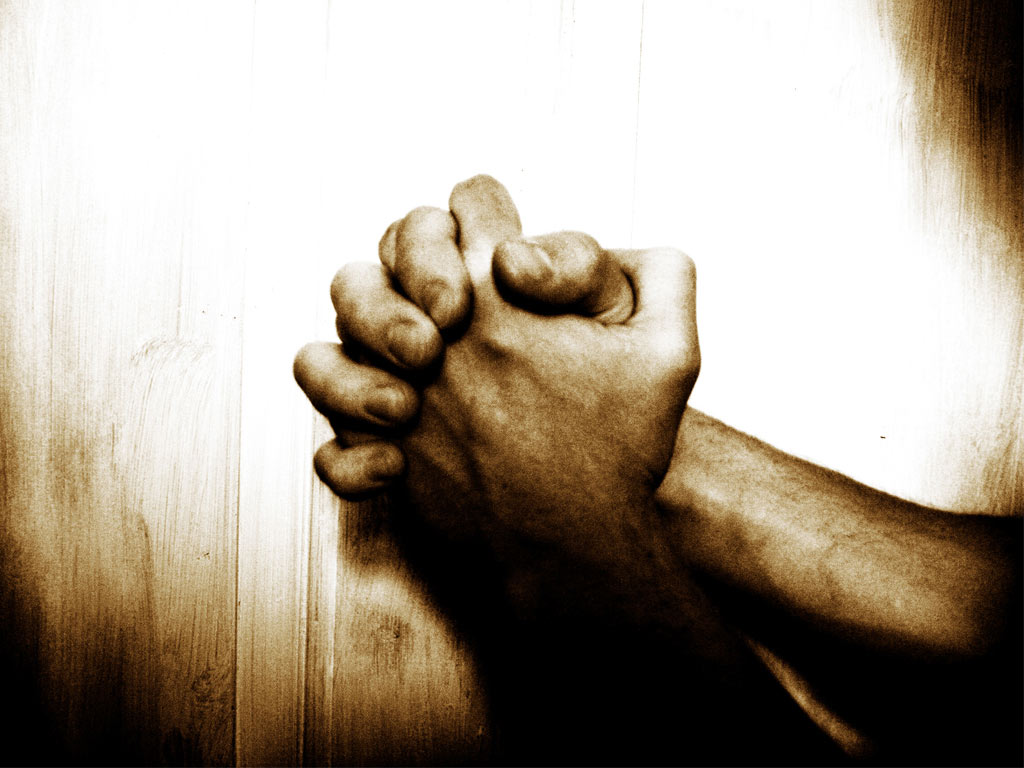
by PAUL
1 Thessalonians 5:17 urges us to “pray without ceasing.”
I’ve been thinking about this instruction a fair bit of late. “Finding God in all things,” the cri de coeur of the Ignatian family, is one thing but trying to pray all the time is quite another.
The only way I can get my head around it is either to broaden my definition of prayer or change my interpretation of “without ceasing.” As is the case with many things, I think it means doing a bit of both.
Beyond any formal prayer, I believe that any life consciously directed at loving God and one’s neighbor is, perforce, prayerful.
You do not have to be muttering the “Jesus Prayer” every waking moment to be a person of prayer. Nor does “without ceasing” mean that you can’t take time away from prayer to watch a sitcom on TV or have a long chat about inconsequential matters with a friend.
It seems to me that “pray without ceasing” is as much about a disposition and commitment than it is about any specific plan of action.
Am I wrong?






